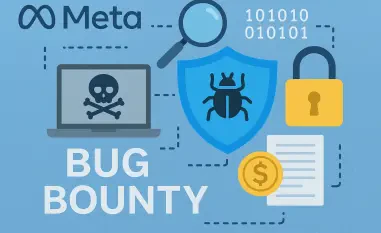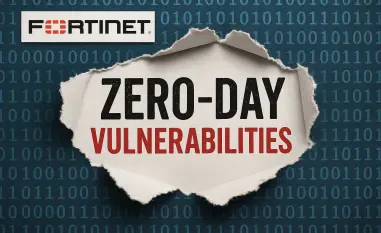In an era where digital transformation dictates the pace of business, the alarming rise in cyber threats targeting identities has become a pressing concern for enterprises worldwide, making it imperative to prioritize robust security measures. Imagine a scenario where a single compromised credential grants attackers unfettered access to an organization’s most sensitive systems, leading to data breaches that cost millions and tarnish reputations overnight. This is not a distant possibility but a stark reality in today’s interconnected landscape, where identity has emerged as the new perimeter of security. Traditional defenses like firewalls and antivirus software fall short against sophisticated attacks that exploit human and non-human identities alike. As artificial intelligence (AI) and automation redefine operational models, the attack surface expands, making identity security not just a protective measure but the bedrock of enterprise defense. This article delves into the critical role of identity and access management (IAM) in safeguarding organizations, exploring the risks, opportunities, and strategic imperatives that define this evolving field.
The Shift to Identity as the New Security Perimeter
The evolution of cybersecurity has shifted dramatically, with identity now standing at the forefront of enterprise protection strategies. Gone are the days when securing physical perimeters and endpoints was enough to thwart malicious actors. Today, with cloud adoption and remote workforces becoming the norm, the boundaries of organizational security have blurred, placing identity at the center of defense mechanisms. Every user, device, and automated agent interacting with systems represents a potential entry point for attackers. Without robust governance over who or what accesses critical resources, enterprises face heightened risks of unauthorized access and data compromise. Reports indicate that a staggering number of breaches stem from stolen or misused credentials, underscoring the urgent need to prioritize identity management. This paradigm shift demands a reevaluation of outdated security models, pushing organizations to adopt comprehensive IAM frameworks that address both human and non-human access points in a cohesive manner.
Further emphasizing this transformation, the rise of AI-driven technologies introduces complexities that traditional security tools cannot handle. Non-human identities, such as bots and automated scripts, often operate with elevated privileges, making them prime targets for exploitation. A significant concern is the lack of oversight, with studies showing that a vast majority of these entities remain ungoverned by identity security policies. This gap creates vulnerabilities that can lead to catastrophic breaches or operational disruptions if left unchecked. For instance, an ungoverned AI agent with access to sensitive data could inadvertently expose information or be weaponized by attackers. As enterprises integrate more automated systems into their workflows, the necessity for stringent identity controls becomes undeniable. Addressing this challenge requires not only technological solutions but also a cultural shift within organizations to recognize identity security as a foundational element of their cybersecurity posture.
Risks Posed by Ungoverned AI and Non-Human Identities
The rapid integration of AI and automation into business processes has unleashed unprecedented opportunities, but it also brings substantial risks when identity security is overlooked. Non-human identities, including AI agents and machine accounts, often possess extensive access rights to critical systems, yet many organizations fail to monitor or secure them adequately. This oversight creates a fertile ground for cybercriminals who can exploit these entities to infiltrate networks undetected. The potential fallout from such breaches includes financial losses, regulatory penalties, and irreparable damage to brand trust. With automation becoming integral to operations, the sheer volume of non-human identities continues to grow, amplifying the attack surface. Enterprises must confront the reality that failing to govern these identities equates to leaving the front door wide open to sophisticated threats that can bypass conventional defenses with ease.
Beyond the immediate dangers, the long-term implications of neglecting identity security in an AI-driven world are equally concerning. The autonomy of ungoverned agents can lead to unintended consequences, such as erroneous actions that disrupt services or compromise data integrity. For example, an improperly configured bot might execute commands that delete critical files or grant access to unauthorized parties, all without human intervention to catch the error. Compounding this issue is the lack of visibility many organizations have into their identity landscape, making it difficult to identify and mitigate risks proactively. As the complexity of digital ecosystems increases, so does the urgency to implement robust IAM solutions that extend beyond human users to encompass every entity interacting with systems. Only through comprehensive governance can enterprises hope to stay ahead of threats that evolve at the same pace as technological innovation.
Strategic Value of Mature Identity Security Programs
Investing in mature identity security programs offers organizations a dual advantage of risk mitigation and operational enhancement, positioning them as leaders in a competitive landscape. Advanced IAM frameworks go beyond mere compliance, delivering measurable returns on investment by streamlining access management and reducing the likelihood of costly breaches. Enterprises with well-developed programs are significantly more likely to achieve cost savings while bolstering their defenses against identity-driven attacks. This is particularly evident in the adoption of AI-powered tools like Identity Threat Detection and Response, which enable real-time monitoring and rapid response to suspicious activities. By prioritizing identity security, organizations not only protect their assets but also unlock new business capabilities, such as seamless collaboration and scalable cloud integrations, that drive growth and efficiency in an increasingly digital marketplace.
Moreover, the strategic importance of IAM is highlighted by the stark contrast between organizations at different maturity levels. Those with advanced programs are better equipped to navigate the complexities of modern threats, while a majority remain stuck at early stages, lacking the tools and vision to progress. This disparity creates a widening gap, where laggards risk falling further behind as new security requirements emerge to address evolving challenges. Embracing identity security as a business enabler rather than a routine task allows enterprises to harness its transformative potential, turning a defensive necessity into a competitive edge. The evidence is clear: organizations that commit to maturing their IAM capabilities gain not only enhanced protection but also the agility to adapt to future disruptions, ensuring long-term resilience in a threat landscape that shows no signs of slowing down.
Bridging the Maturity Gap for Future Readiness
The current state of identity security maturity across enterprises reveals a troubling divide that demands immediate attention from industry leaders. A significant portion of organizations linger at rudimentary levels of IAM development, unprepared to tackle the sophisticated threats that define the digital age. This stagnation is particularly alarming as frameworks evolve to include new mandates for securing emerging technologies like AI and automation. Without proactive efforts to advance, these organizations effectively regress, leaving themselves exposed to risks that could have been mitigated with strategic planning. Bridging this maturity gap requires a concerted effort to invest in scalable IAM solutions, train staff on best practices, and foster a culture that views identity security as integral to business success. Only by closing this divide can enterprises hope to build a foundation strong enough to withstand the challenges of an ever-shifting cybersecurity environment.
Looking back, the journey to strengthen identity security has underscored the necessity of viewing it as the central pillar of enterprise defense. The unchecked autonomy of AI agents and non-human identities once posed daunting risks, but organizations that took decisive steps to implement mature programs reaped substantial benefits in both security and efficiency. The divide between early-stage and advanced entities highlighted a critical need for action, as standing still equated to losing ground in a relentless threat landscape. Moving forward, the focus should shift to actionable strategies, such as conducting thorough assessments of identity postures and leveraging insights from comprehensive industry reports to guide progress. Embracing IAM as a strategic enabler rather than a checkbox exercise remains the key to staying competitive. Enterprises that committed to this path in the past paved the way for a more secure future, proving that prioritizing identity security was not just a defense mechanism but a catalyst for enduring success.













